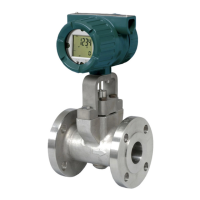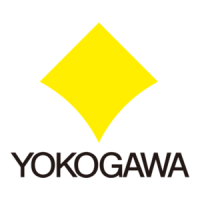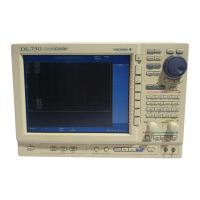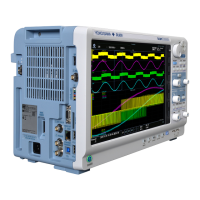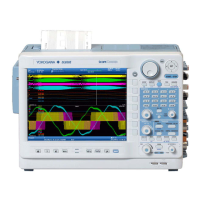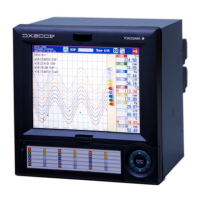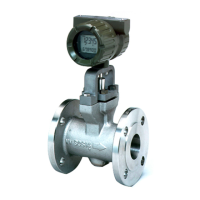Do you have a question about the YOKOGAWA DY040 and is the answer not in the manual?
General safety precautions for personnel and equipment, including warnings for improper use.
Essential safety guidelines for installation, wiring, operation, maintenance, and specific types.
General guidance on selecting suitable locations for installation.
Guidelines and warnings related to piping connections and fluid handling.
Recommendations for piping to prevent gas bubble generation in liquid flow.
Specific insulation instructions for cryogenic and high-temp versions.
Detailed instructions for installing wafer and flange type flowmeters.
Step-by-step guide for installing wafer type flowmeters with diagrams.
Step-by-step guide for installing flange type flowmeters.
Instructions for mounting the remote type converter unit.
General safety and handling precautions before performing wiring.
Explanation of wiring methods for different output signal configurations.
Terminal layout and connection samples for integral and remote types.
Instructions for connecting the signal cable between the remote detector and converter.
Step-by-step instructions for preparing signal cable ends for flowmeter and converter.
General safety and handling precautions during wiring.
Requirements and methods for proper grounding of the instrument.
Procedure to change the display mode from percentage to engineering units.
Procedure to configure the lower display to show the total rate.
Overview of the setting mode used for checking and rewriting parameters.
Explanation of the setting mode display structure and parameter list.
Flowchart detailing the indicator's construction and parameter setting process.
Step-by-step guide for inputting numeric data for parameter settings.
Procedures for operating the instrument using the BT200 terminal.
How to connect the BT200 terminal for communication with the instrument.
Procedure to display flow rate data on the BT200 screen.
Methods for setting parameters using the BRAIN Terminal (BT200).
Procedures for operating the instrument using a HART configuration tool.
Ensuring compatibility between instrument DD and HART tool DD.
Wiring diagram for connecting the HART tool to the instrument.
Functions for renewing data and transferring parameters to/from the HART tool.
Accessing self-diagnostic functions via the HART configuration tool.
Using the write protect function to secure configuration data.
Specific functions available via HART communication.
General information on parameter setup before factory shipment.
Specific setup requirements for multi-variable type instruments.
Description of the parameter list structure and attributes.
Parameters for principal operations of the digitalYEWFLO.
Parameters for thermometer setup, available for /MV option code.
Parameters for fine-tuning and adjustment of instrument settings.
Parameters related to testing instrument outputs.
Parameters for basic setup and configuration.
Setting the flow rate span value.
Parameters for detector setup, pre-configured at the factory.
Setting the flow span value.
Parameters for adjusting instrument settings.
List of error codes, their causes, and recovery measures.
Procedures for adjusting the flowmeter's zero, span, and loop tests.
Procedures for manual adjustments when the indicator reads over zero at zero flow.
Procedure for removing the vortex shedder assembly, including torque values.
Warning regarding amplifier unit and vortex shedder bar replacement.
Troubleshooting common flow-related errors and fluctuations.
Diagnosing and resolving issues with large flowmeter errors.
Troubleshooting steps for output indication dropping to zero over time.
Diagnostic flowchart for cases where no output is indicated during fluid flow.
Diagnostic flowchart for situations where output is indicated at zero flow.
Troubleshooting specific flow issues for /MV models.
Diagnostic steps for flow issues when using the /MV model.
Key technical and performance specifications of the flowmeter.
Detailed performance metrics including fluid type, accuracy, and repeatability.
Explanation of model suffix codes for configuring flowmeters and converters.
Details on models, suffix codes, and specifications for DY series.
Details on models, suffix codes, and specifications for DYA converters.
Guide for selecting flowmeters based on process connection and model code.
Lists various optional features and their specifications.
Details on ATEX, CSA, and other explosion protection certifications.
Specifications for the multi-variable type with built-in temperature sensor.
Specifications for flowmeters with the reduced bore option.
Guidelines for determining flowmeter size based on velocity and density.
Detailed accuracy specifications based on flow velocity.
Accuracy data for mass/volumetric flow rates under normal conditions.
Details on ATEX certification requirements and technical data.
Specific safety conditions for using flameproof apparatus in explosive atmospheres.
Details on Type 'n' protection for flameproof apparatus.
Wiring diagram for intrinsically safe installation.
Wiring diagram for Type 'n' protection installation.
Details on FM certification requirements and technical data.
Details on SAA certification requirements and technical data.
Wiring diagrams for SAA intrinsically safe and Type 'n' installations.
Details on CSA certification requirements and technical data.
Wiring diagram for CSA intrinsically safe installation.
Diagrams and warnings for CSA Type 'n' and non-incendive installations.
Details on TIIS certification requirements and technical data.
| Model | DY040 |
|---|---|
| Digits | 4 |
| Frequency Range | 50/60Hz |
| Measurement Type | Voltage, Current |
| Accuracy | ±0.5% of reading |
| Power Supply | 100-240V AC, 50/60Hz |
| Operating Temperature | 0 to 50 °C |
| Storage Temperature | -20 to 60 °C |
| Dimensions | 96 x 96 x 100 mm |
